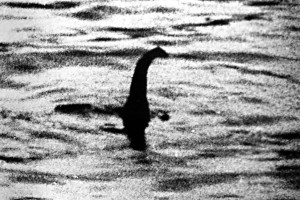With sightings of the Loch Ness monster growing rarer each year, the latest theory among Nessie enthusiasts is that she was a giant catfish.
The species, released into the loch by the Victorians, can survive in frigid waters. If the theory is correct, it will have solved the mystery of the Loch Ness Monster, a popular obsession since the 1930s. That and the fact that a BBC research team scoured the loch in 2003, using satellites and 600 sonar beams, all to no avail.
It’s been a tough few years for the field of cryptozoology, as monster hunting is known in polite circles. Take the kraken, which the medieval Nordics believed could crush a ship with its mighty tentacles. Alfred, Lord Tennyson imagined it as the most primeval of all the terrors of the sea: “Below the thunders of the upper deep, / Far, far beneath in the abysmal sea, / …The Kraken sleepeth.”






